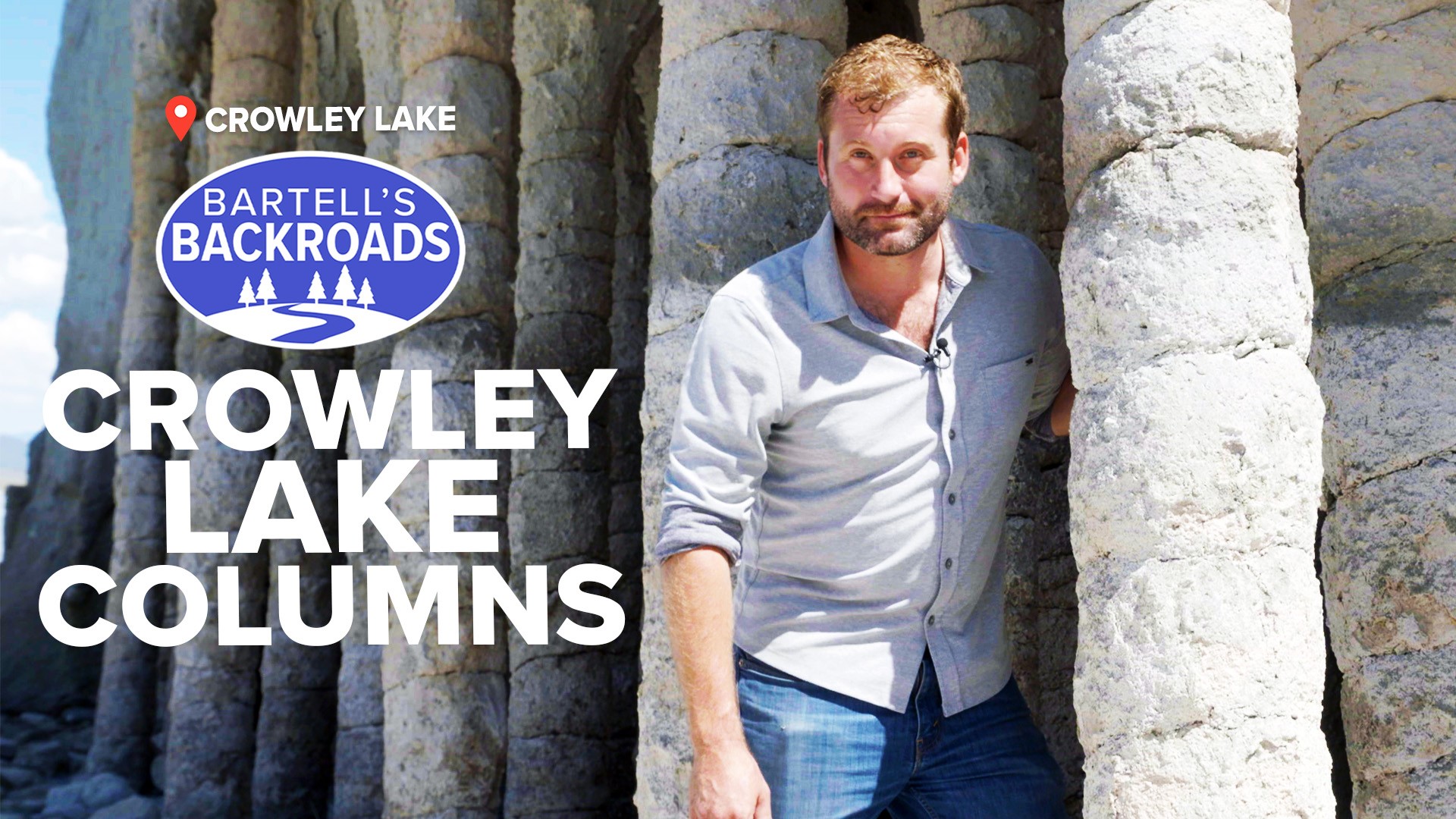CROWLEY LAKE, Calif. — At the eastern most edge of Crowley Lake in Mono County, there is a geological formation like no other. It's known as the Crowley Lake Columns.
From a distance, it looks like rows of off-white pillars that are holding up the hillside like a giant Greek Parthenon under the bright blue Eastern Sierra sky. It’s an absolutely amazing sight to see. The only problem? It’s not easy to get to.
There are only three ways to access the Columns: by boat, in a high-clearance vehicle, or on foot. For many, walking is the best option because a standard SUV won’t make it over the steep, rutted road.
Geologist Noah Randolph-Flagg knows the way to the Columns well. He’s been studying them for years.
“The history and the story of the columns is really the story of a volcano,” Randolph-Flagg says.
The volcano story he is talking about started 780,000 years ago after a massive eruption. Following the eruption, the ground subsided or collapsed in on itself leaving a 10 by 20-mile-long hole that geologists call the Long Valley Caldera.
Crowley Lake, and much of the surrounding area, is essentially a pile of ash hundreds of feet thick. Much like a campfire, everything below the ash was very hot for a very long time. Randolph-Flagg says during that long hot period, something strange happened.
“This type of rock has been around for a long time but it is a mystery why it formed and how it formed.”
There is a lot of scientific debate on exactly how the Crowley Lake Columns formed, but in 2018, Noah and his colleagues used research data they collected in previous years to create a computer model on volcanic activity.
“In our model, it took hundreds of years for the columns to form,” Randolph-Flagg says.
TAKE A TRIP ON BARTELL'S BACKROADS:
► See an interactive map of everywhere John has visited on the backroads
► Watch all of the Backroads videos
► Follow John on Facebook
According to Randolph-Flagg, over many years rainwater seeped down through the hot ash and started to boil.
“What happens when water boils in this type of soil is that it forms a glue which we call mordenite.”
Research suggests the mordenite glue columns are all over the Long Valley Caldera, not just at the edge of the lake.
“The reason we see them so beautifully here is because of this lake, which was built in 1941 by the damming of the Owens River,” Randolph-Flagg says.
Crowley Lake is a reservoir and as it rises and falls, it erodes the ashy soil but not the mordenite columns. Volcanically formed columns like these are only found in a handful of places in the world. By studying them, Noah hopes it will help save lives after future eruptions.
“We’ve actually seen this recently. In 2018, there was an eruption in Guatemala. Some of this hot rock remobilized and wiped out a village. This is a real hazard to people [who] live downhill from volcanoes and understanding how they mobilize and cool is really important,” Randolph-Flagg says.
You don’t have to worry about the Crowley Lake Columns moving. They’ve been a stable rock formation for many years and a great backdrop for pictures -- if you can get there.
To learn more about the formation of the Crowley Lake Columns, read the scientific article written by Noah Randolph-Flagg, Stephen Breen, Andres Hernandez, Michael Manga, and Stephen Self.
HIT THE BACKROADS: Summer is here! Plan your ultimate road trip with John Bartell's list of California's top 10 destinations to visit.



















